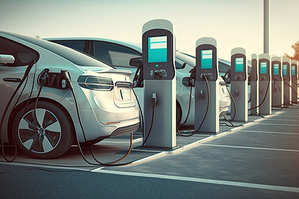It is anticipated that over half of all automobiles sold globally will be electric: IEA
According to the latest edition of the International Energy Agency’s (IEA) annual Global Electric Vehicle Outlook, released on Tuesday, over one in five cars sold globally this year are anticipated to be electric. Rising demand for these vehicles is predicted to occur over the next ten years, revolutionizing the global auto industry and dramatically lowering oil consumption for road transportation.

According to the Outlook, sales of electric cars are expected to continue to grow globally in 2024, with an estimated 17 million sold by the end of the year. Sales increased by almost 25% in the first quarter of 2023 when compared to the same time the previous year, which is comparable to the growth rate seen from a larger base.
Approximately the same number of electric vehicles were sold worldwide in the first three months of this year as there were in all of 2020.
Sales of electric vehicles are expected to soar to over 10 million in China by 2024, making up almost 45% of total automobile sales in the nation.
About one in nine vehicles sold in the US is expected to be electric, while one in four cars sold in Europe is expected to be electric, despite a generally poor forecast for passenger car sales and the phase-out of subsidies in several nations.
On top of a record-breaking 2023, this increase continues. Global sales of electric vehicles surged by 35% to over 14 million last year. Demand continued to be concentrated in China, Europe, and the US, but in other developing nations, like Vietnam and Thailand, where 15% and 10% of all vehicles sold were electric, growth also picked up.
Future years should see even more profound changes as a result of continued regulatory support, major investment in the electric vehicle (EV) supply chain, and reductions in the cost of EVs and their batteries.
According to the Outlook, by 2035, all other cars sold worldwide are expected to be electric vehicles under the policy conditions.
Meanwhile, by 2035, two out of every three automobiles sold would be electric if nations fulfilled their full and timely energy and climate obligations.
This scenario eliminates the need for almost 12 million barrels of oil every day, which is equal to the present demand from road transport in China and Europe combined, thanks to the quick adoption of electric vehicles, which range from automobiles to vans, lorries, buses, and two- and three-wheelers.
“Our data clearly shows the ongoing momentum behind electric cars, although it is more pronounced in certain markets than others,” said Fatih Birol, executive director of the IEA.
“The worldwide EV revolution seems to be preparing for a new era of expansion, rather than slowing down. The surge in investment in battery production indicates that the electric vehicle supply chain is progressing to fulfill the aspirational development objectives of manufacturers. Consequently, it is anticipated that the percentage of EVs on the road will keep increasing quickly. By 2030, almost one in three automobiles on Chinese roads and nearly one in five in the US and EU are expected to be electric, based just on current policy settings. The automotive and energy sectors will be significantly impacted by this change.
According to the research, manufacturers have made large financial commitments as well as other substantial efforts to fulfill governments’ aspirations for stronger EVs.
The world’s ability to make batteries for electric vehicles (EVs) is well-positioned to meet demand, even as it climbs dramatically over the next ten years, due to high levels of investment during the last five years.
The analysis highlights that the rate at which the transition to electric vehicles occurs may not be steady and will depend on cost.
More than 60% of electric vehicles sold in China in 2023 were already more affordable to purchase than their conventional counterparts.
The average cost of buying an internal combustion engine vehicle remained lower in Europe and the US, but rising market competition and advancements in battery technology are predicted to drive down costs in the years to come.
The reduced running expenses of EVs imply that even with high upfront charges, the original investment eventually pays for itself.






